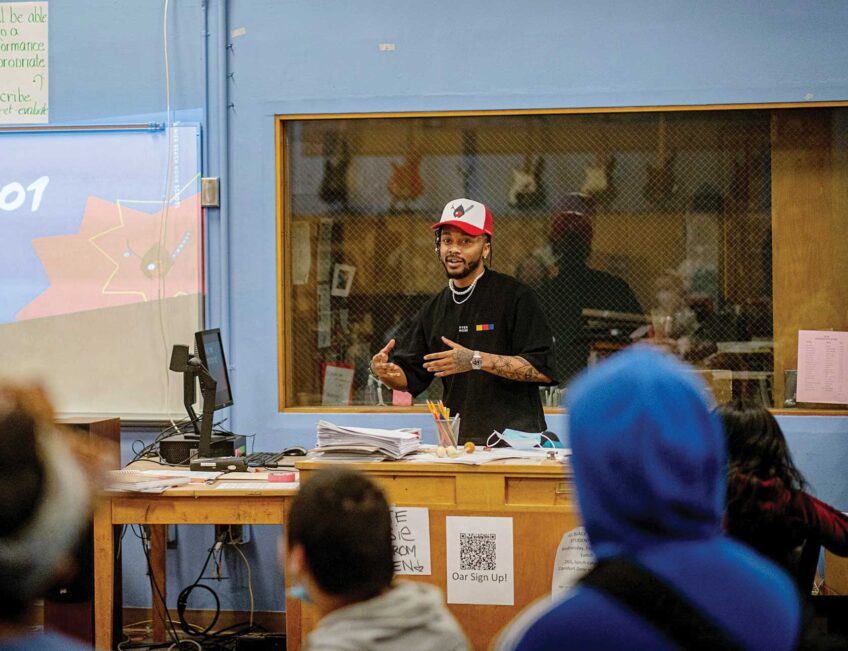A March 20 Executive Order to “facilitate the closure of the Department of Education” has been contested in federal court for four months. Its fate remains unsettled. At issue are 1,378 staff put on leave through a reduction-in-force and whether the Department of Education can meet its statutory mandate without them.
Of the lawsuits challenging the move in U.S. District Court for the District of Massachusetts, two reached the Supreme Court, which struck down the lower court rulings in July. They were filed by a coalition of 21 states, local school districts and public sector unions within a week.
A third suit by the Victim Rights Law Center, a special education advocate, and two families whose school-aged children suffered severe race- and disability-based bullying, survives. The government hasn’t appealed that injunction and has a brief due next month.
The plaintiffs argue that cutbacks amount to more than staffing decisions.
“It has never happened before this year that the federal government has attempted to fire so many people out of an executive agency that it can no longer function,” argued New York’s Rabia Muqaddam in appellate court.
Seven of the Office of Civil Rights’ (OCR) 12 regional offices have been shuttered. The reduction-in-force hit over 40% of OCR’s staff.
The states say DoE can’t fulfill federal law understaffed. “It does not have the resources to maintain compliance with Title II or Title IV” of the Elementary and Secondary Education Act of 1965, Muqaddam argued. Congress reauthorized ESEA, which authorizes major grants, in 2015.
Muqaddam argued the department cannot “protect student borrowers” or “get the data it needs to award formula Title I and IDEA funding.” Those two grants are the largest sources of federal funding for schools.
Before the Supreme Court, the government argued that the plaintiffs “have no statutory right to any particular level of government services” and that “alleged delays” don’t justify judicial intervention.
States asserted delays are damaging
In affidavits, experts anticipated funding delays. Claiming harm, they likened late funding to that which never arrived.
Denise Barton, the chief deputy general counsel for the University of Massachusetts, said “laying waste to federal student aid, whether through delays or decreases, represents a significant threat and patent irreparable harm.”
In a March 24 affidavit, Barton listed a significant disruption of Free Application for Federal Student Aid (FAFSA) completion among the “numerous harmful impacts” that “the University of Massachusetts has observed.”
FAFSA issues predate the reduction-in-force. “Last year’s rollout of a new simplified FAFSA,” she attested, “demonstrated the harmful impact that technical glitches and delays” have on enrollment. “UMass Boston’s overall FAFSA filing rate was down significantly, a trend that was observed nationally.”
The Department of Education reports on FAFSA completion by high school and college. This year, UMass Boston had 23,660 completed FAFSAs through March, compared with 17,440 at the same point one year ago and 20,667 the year before.
“At UMass Boston, 78% of the incoming first year class has filed a FAFSA,” spokesperson Colleen Quinn confirmed.
Barton linked “the delays, at best, and complete cessation, at worst, of the Department’s functionality” with “far-reaching and irreversible consequences.”
“These looming existential threats will lead to program closures, layoffs, and institutional shutdowns,” Barton concluded in her March affidavit.
“There have been no closures or institutional shutdowns at any of the five campuses,” Quinn said last week. Only UMass Chan Medical School announced furloughs or layoffs affecting 200 employees on March 11, she said. A Chan school spokesperson attributed that to a National Institutes of Health funding shortfall.
Drew Echelson, Rhode Island’s deputy education commissioner, said “any delays, interruptions, or reductions in funding as a result of the pending reduction-in-force at the Department of Education are likely to have a debilitating impact on the quality of education in Rhode Island.”
Echelson attended Harvard University and was chief of schools and accountability for the Boston Public Schools.
Superintendents in Easthampton, Somerville and Worcester said “uncertainty and delays” will result in cuts to vital staff and services. EPS’s Maureen Binienda noted that “even without funding cuts,” harms caused by doubts “are real and already happening.”
“Delays or disruptions in federal funding, and especially Title I or IDEA funding, would force Worcester into difficult decisions and tradeoffs,” wrote Rachel Monarrez, who stepped down as superintendent in June.
“If our Title I funding were cut, delayed, or otherwise impeded, we could be losing funds used to pay staff and fund professional development activities,” attested SPS’s Rubén Carmona.
According to an April 1 memo, Somerville and Easthampton do not know whether they can add staff for the 2025-26 school year, whether they can provide summer school for children who need it, or whether they can even retain current staff.
“The impacts of funding uncertainty — fewer educators and support staff, worse services for students and larger class sizes — harm students in ways that cannot be simply made up in the future,” the districts argued.
According to Somerville Public Schools’ chief communications officer Darryl Nash, the district has received Title I and IDEA grant funding for the current fiscal year; however, he noted that IDEA resources are “uncertain for next [year].”
Somerville’s $126 million school budget counts $1.8 million from IDEA and $1.4 million from ESEA Titles I to IV. “Somerville receives $1.1 million in Title I funding,” Carmona told the court.
Nash said, “The withholding of Title II, III, and IV funds continues to negatively impact” SPS. Most of those funds were released last week.
Federal grants reimburse school districts. “We submit most reimbursement requests monthly,” Carmona wrote.
The Solicitor General criticized declarations that “employ speculation and were largely made only three days after the RIF took effect.”
“In short, the district court accepted as sufficient, allegations that respondents ‘fear’ harms to ‘quality education,’” the government argued, “that they ‘may be unable to plan for’ the future, and that [students] ‘would be forced to forgo higher education’ if federal student aid vanished.”
Third case exhibits strong standing
Evincing actual harm, the Victim’s Rights Law Center suit “warrants a separate decision to address the unique harms [plaintiffs] are suffering,” the district judge found.
“Students have seen their investigations stall due to the RIF,” the judge wrote. “Therefore, the students have alleged a sufficient injury in fact traceable to defendants.”
The judge rejected claims investigations merely slowed, finding “clearly demonstrated irreparable harm with respect to at least two students who are unable to return to public school because their complaints have been forestalled by the OCR.”
“OCR is under an explicit mandate to enforce federal civil rights laws by reviewing complaints and making prompt investigations,” the judge ruled. “The statute requires that OCR investigate all complaints alleging violations of federal civil rights laws.”
Federal law prohibiting discrimination based on race and sex directs “each federal department and agency which is empowered to extend federal financial assistance” to “effectuate” the law.
In July, Secretary McMahon told CBS News that the Office of Civil Rights in the Justice Department can monitor civil rights complaints for the Department of Education.
For Amanda Walsh, deputy director of external affairs at Victim Rights Law Center, government compliance remains elusive. “VRLC has not received any outreach on our pending complaints since June 18,” she said. “We don’t know what regional office is handling those complaints because” Boston’s Regional Office “has closed.”
Contacting previous attorneys, investigators and the general mailbox hasn’t yielded a status update. “It’s not clear to us who the point of contact is,” Walsh said.
Meanwhile, OCR’s caseload has been climbing. OCR received 6,936 complaints in FY 2010 compared to 9,990 complaints in FY 2019 according to an April amicus brief written by U.S. Representatives in an amicus brief. The Massachusetts delegation all signed on.
Last year, OCR received 22,687 complaints, an 18% increase over 2023.






